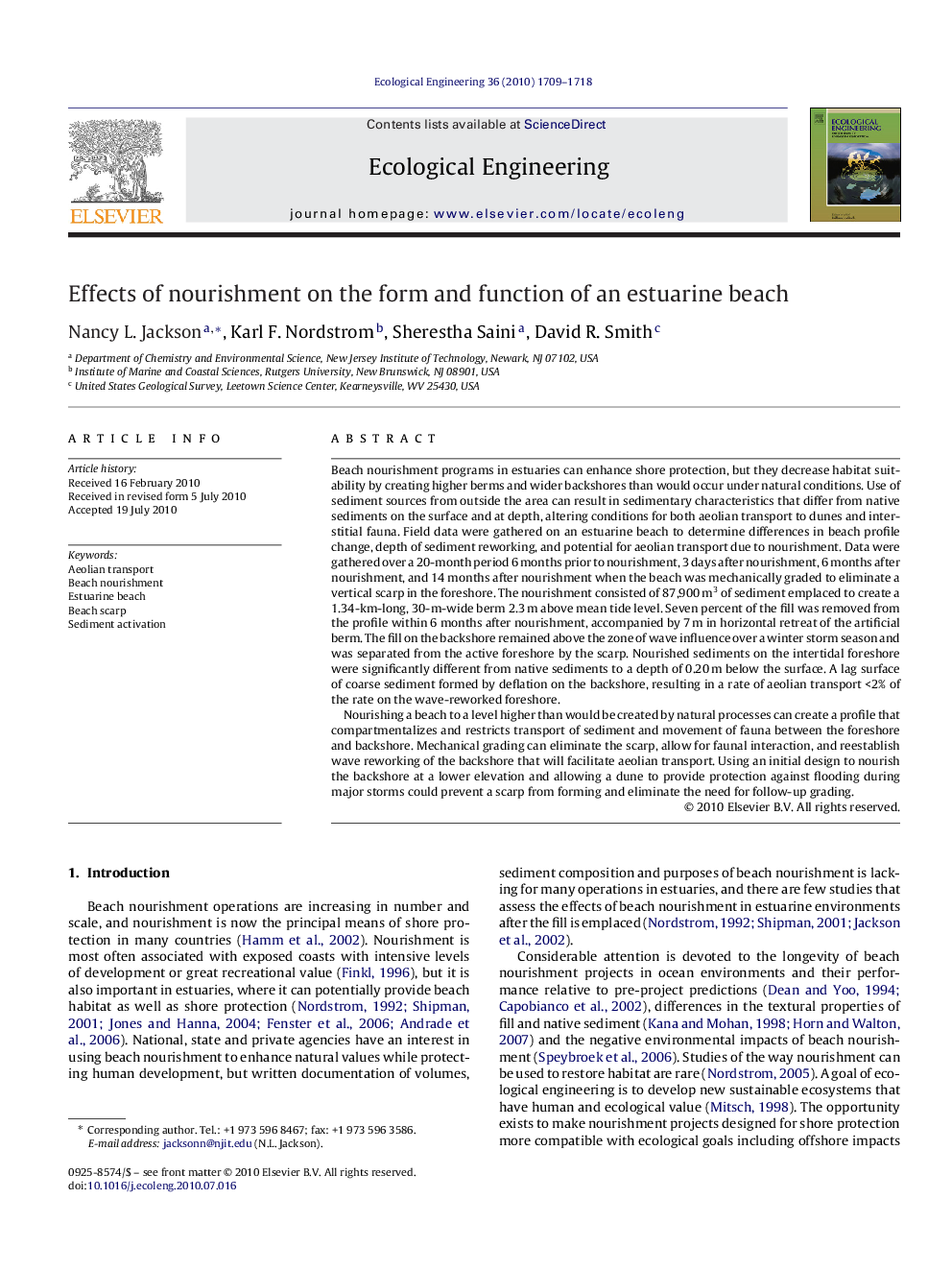| Article ID | Journal | Published Year | Pages | File Type |
|---|---|---|---|---|
| 4390483 | Ecological Engineering | 2010 | 10 Pages |
Beach nourishment programs in estuaries can enhance shore protection, but they decrease habitat suitability by creating higher berms and wider backshores than would occur under natural conditions. Use of sediment sources from outside the area can result in sedimentary characteristics that differ from native sediments on the surface and at depth, altering conditions for both aeolian transport to dunes and interstitial fauna. Field data were gathered on an estuarine beach to determine differences in beach profile change, depth of sediment reworking, and potential for aeolian transport due to nourishment. Data were gathered over a 20-month period 6 months prior to nourishment, 3 days after nourishment, 6 months after nourishment, and 14 months after nourishment when the beach was mechanically graded to eliminate a vertical scarp in the foreshore. The nourishment consisted of 87,900 m3 of sediment emplaced to create a 1.34-km-long, 30-m-wide berm 2.3 m above mean tide level. Seven percent of the fill was removed from the profile within 6 months after nourishment, accompanied by 7 m in horizontal retreat of the artificial berm. The fill on the backshore remained above the zone of wave influence over a winter storm season and was separated from the active foreshore by the scarp. Nourished sediments on the intertidal foreshore were significantly different from native sediments to a depth of 0.20 m below the surface. A lag surface of coarse sediment formed by deflation on the backshore, resulting in a rate of aeolian transport <2% of the rate on the wave-reworked foreshore.Nourishing a beach to a level higher than would be created by natural processes can create a profile that compartmentalizes and restricts transport of sediment and movement of fauna between the foreshore and backshore. Mechanical grading can eliminate the scarp, allow for faunal interaction, and reestablish wave reworking of the backshore that will facilitate aeolian transport. Using an initial design to nourish the backshore at a lower elevation and allowing a dune to provide protection against flooding during major storms could prevent a scarp from forming and eliminate the need for follow-up grading.
